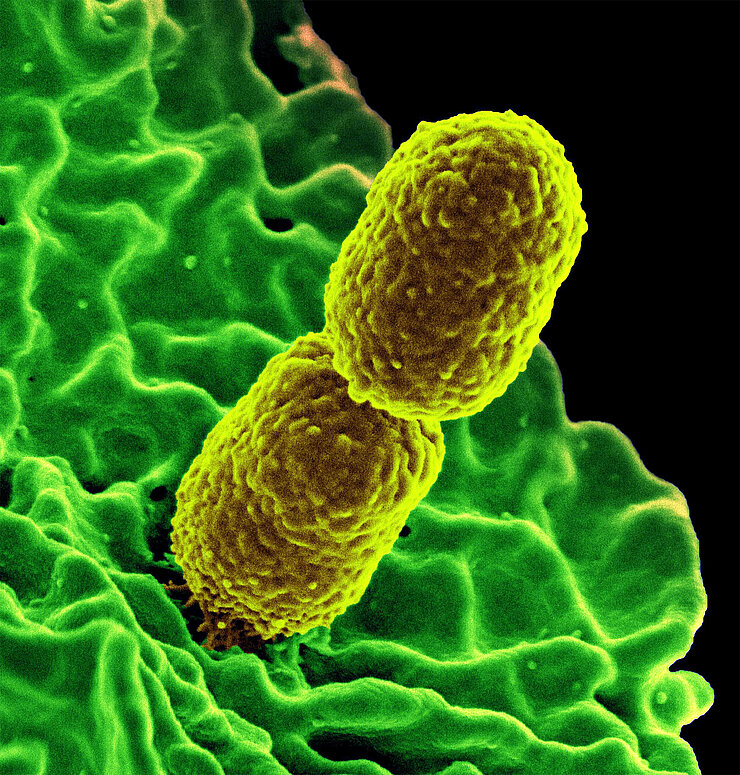Klebsiella

"The Return of Klebsiella" read the headline of "Die Zeit" on 8 March 2012 in an article discussing the return of this bacterium at the premature infant and neonate ward of Klinikum Mitte in Bremen, Germany. This intestinal bacterium already caused the death of three children in 2011. The ward had to be closed temporarily. Although this specific Klebsiella strain in Bremen had been extremely rare before that time, Infection of premature infants is not an exception.
The immune system of premature infants is not yet working properly, their skin does not protect them effectively from their surroundings and they are sterile on the inside. If the germs penetrate into the intestine, they can multiply undisturbed and cause harm. This is made even more difficult by the bacteria being resistant to most antibiotics. Consequently, we can't rush to their aid when the infants fight the bacteria.
This means that premature infants are afflicted by a serious Infection caused by a bacterium which is basically harmless for most people. Some three to five percent of the population harbour Klebsiella pneumoniae, but they do not get ill because of their immune system. People with a weakened immune system however - such as the premature infants in Bremen - or with concurrent acute infections may suffer serious diseases. The manifestation of the disease depends strongly on which part of the body is colonised by the bacteria. This can range from a serious Infection of the gastrointestinal tract to inflammation of the lungs. Sepsis and wound infections can also be caused by a Klebsiella Infection.
Treatment
Although one can theoretically treat the bacterium named after the bacteriologist Edwin Klebs with antibiotics, this is not really easy, since it possesses a natural resistance against the benzylpenicillin and aminopenicillin components of many standard antibiotics. The treatment is made even more difficult by the bacteria being able to acquire other resistances in addition to their own natural resistance.
Another problem is that this bacterium is very persistent. An analysis performed after a Klebsiella outbreak caused six deaths in just a few months in a US hospital in 2011 showed that the isolation measures initiated after the first Infection were correct, but ultimately insufficient.
The bacterium is capable of surviving in the gut for long periods of time without causing symptoms. This often allows the Infection to remain undetected. As a result, the risk of re-infection increases significantly. Research of the American physicians also showed that the bacterium is transmitted not only from human to human, but also by contact with contaminated surfaces. A major concern: The physicians also detected the pathogen in ventilation equipment that had been disinfected repeatedly. Obviously, this had not been done thoroughly enough for this extremely robust bacterium.
Its durability, ability to proliferate rapidly and resistance against antibiotics make Klebsiella pneumoniae a nightmare for all medical professionals in hospitals. Aside from improved hygiene measures, the focus must be on understanding the mechanisms of resistance better in order to be able to make sure that this germ can be controlled in hospital settings in the long run.
One of the most hazardous hospital germs, this pathogen has become a focus of research at the Helmholtz Centre for Infection Research and will be studied intensively in the future.
Involved research groups
-
Microbial Immune Regulation
 Prof Dr Till Strowig
Prof Dr Till Strowig





